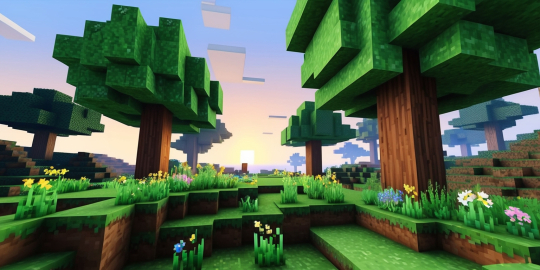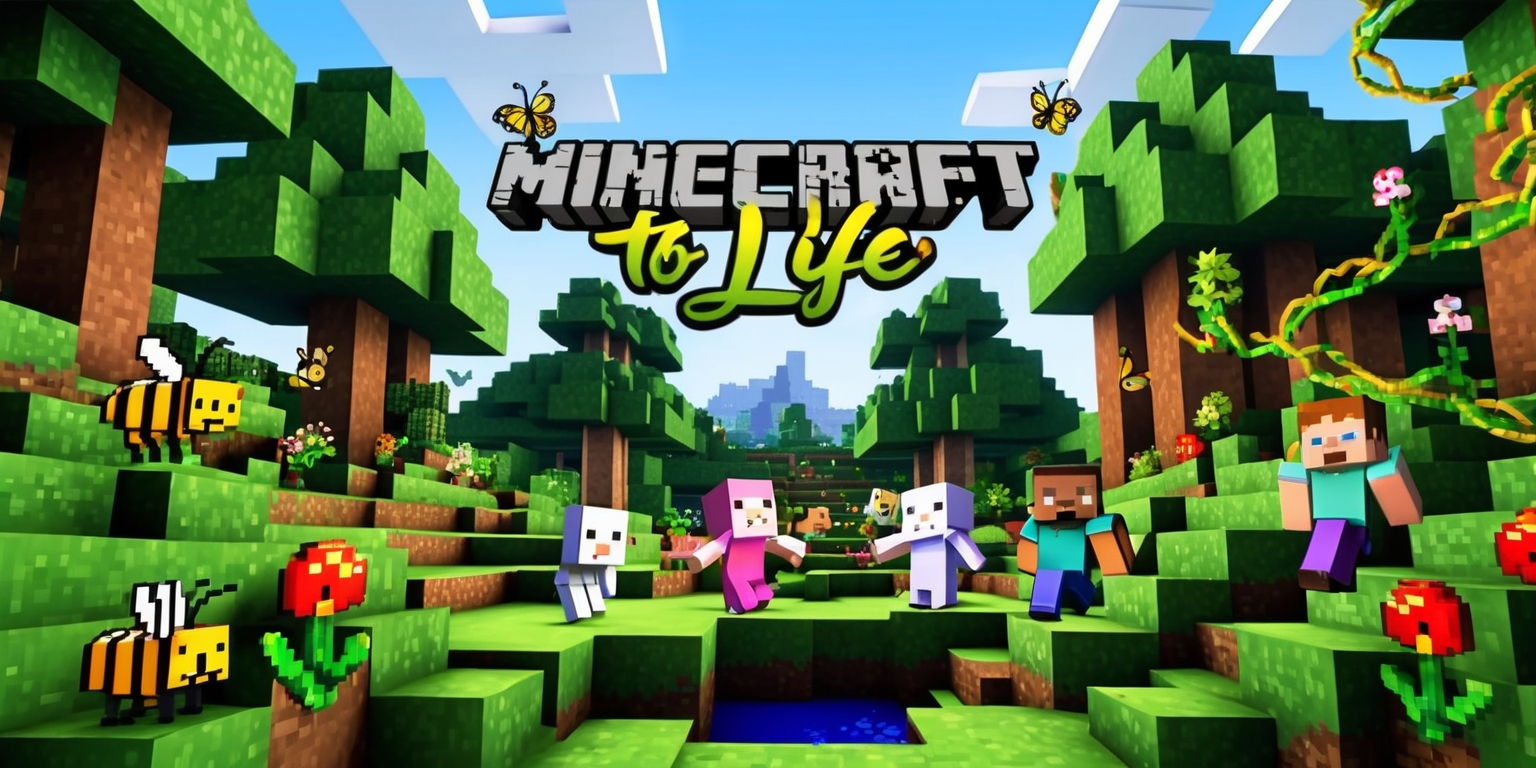
The upcoming Spring To Life update promises to infuse Minecraft with fresh dynamism and imaginative features that redefine its familiar blocky world. Mojang has Lay the groundwork for a livelier and more dynamic varied experience by embracing a gamut of new elements that range from enhanced creature behavior to innovative blocks and detailed environmental interactions. The anticipation The excitement is unmistakable as players prepare to set off on their explorations revamped biomes and engage with ecosystems that evolve with each tick. With a release date set to energize the early months of 2025, this update continues Minecraft’s tradition of frequent enhancements, Guaranteeing that even veteran explorers will continually uncover fresh marvels at every turn of the expansive digital realm.
Anticipated Update Milestone
The long-awaited Spring To Life update is poised to make its debut on Tuesday, March 25, 2025, marking the first major update of the year. This release heralds a transformative phase where new mob variants and auditory details come together to breathe life into Minecraft’s diverse biomes. Players familiar with the beta Snapshot experience have already sampled some of the striking changes planned for this version, and the community buzz is increasing as more features get revealed. The update is designed to diversify gameplay through innovative block placements and environmental adjustments that enrich the in-game world. Every new element—from flora to mechanics—has been thoughtfully implemented to ensure that the game remains engaging and evolving for its vast player base.
Refined Creature Diversity and Biome Influences
One of the update’s standout features is the introduction of refined creature diversity that adapts to distinct biomes. Traditional mobs such as chickens, pigs, and cows now come in Temperate, Cold, and Warm variants, each boasting unique coloring and environment-specific behaviors. This nuanced approach calls for players to explore various climate zones in search of hidden surprises. For instance, Cold variants adapt perfectly to frigid landscapes like snowy plains or the deep recesses of The End, while Warm variants flourish in areas like the Savanna or Mangrove Swamps. Additionally, wolves come with an expanded audio palette featuring six fresh sound profiles—ranging from Big to Grumpy—to enhance the emotional engagement of in-game interactions. This thoughtful update enriches both wonder and strategy in creature encounters.
Innovative Block Creation and Functionality
Minecraft’s blocks have long been the canvas of creativity and structural innovation, and the Spring To Life update takes this to another level with new elements that merge form and function. Among the fresh additions, bushes have been programmed to generate in multiple biomes, adapting their hue to mirror the surrounding grass tones, and are fit for use in composting processes. The new Cactus Flower offers an unexpected twist: rather than simply contributing to vertical growth, cacti have a chance to produce these vibrant blossoms under defined conditions. These blocks are not merely decorative; they engage players in assembly of natural habitats and exhibit in-game versatility by catering to crafting needs, such as the creation of pink dye. The design decisions here reflect a commitment to enhancing creative freedom while maintaining strategic resource management for players.
Enriched Flora Dynamics and Atmospheric Interactions

The update brings significant enhancements to the way flora interacts with the environment, making the Minecraft world feel organically vibrant. The Firefly Bush, reintroduced after previous controversies, now adds a layer of nocturnal enchantment, as its glow and ambient sound pulses enhance the eerie beauty of swampy biomes and watery riverbanks. When night falls, the area around these bushes illuminates subtly, offering a mesmerizing visual treat. Remains meal not only encourages growth but can also propagate clusters of these magical plants, ensuring that light and life merge seamlessly in dark environments. Furthermore, the introduction of decorative elements like wildflowers, reserved for birch and old-growth birch forests, injects a natural variability that deepens the sensory experience with every step taken through densified landscapes.
Landscape Transformation and World Generation Innovation
In a move to diversify the Minecraft world’s structural fabric, the update introduces transformation in tree life with the addition of fallen trees. This new element alters the conventional vertical narrative of tree growth by allowing various species—oak, spruce, birch, and jungle—to appear horizontally, adding an element of natural imperfection to the environment. Such trees can be discovered peppered throughout the game, excluded only from biomes like Meadows or Bamboo Jungles, adding a sense of randomized realism. Players will find that these fallen trees can be artistically decorated with mushrooms or vines, opening up creative opportunities for landscape design. This careful recalibration of world generation not only enriches gameplay visuals but also invites players to interact with nature in unexpected and innovative ways.
Immersive Audio Enhancements and Soundscapes
The auditory landscape is becoming as layered as the visual one in this update, with new sound effects aimed at elevating player immersion. In addition to the varied vocalizations assigned to wolves, ambient sounds have been assigned to naturally occurring blocks like dead bush clusters when paired with specific materials. These sounds are designed to evoke a sense of place, reinforcing the connection between the player and their surroundings. Each biome carries its own unique tune, subtly adjusting as environmental conditions shift, ensuring that no two explorations feel identical. This heightened audio detail not only underlines the natural ambiance of the in-game world but also aids players in deciphering their surroundings, encouraging deeper strategic and exploratory engagement as they traverse the varied landscapes.
Technical Innovations and Experimental Elements
Minecraft continues its tradition of innovation with the integration of technical and experimental blocks specifically tailored for in-game testing and developmental purposes. The inclusion of Test and Test Instance blocks is a nod to the game’s evolving architecture, designed to streamline quality assurance and game mechanics troubleshooting. These blocks, while mostly technical, highlight the willingness of the developers to further expand Minecraft’s internal toolkit. Moreover, the introduction of special item variants such as the Blue Egg and Brown Egg—each corresponding to the distinct cold and warm chicken variants—demonstrates how deep the game’s technical layering can go. While serving a functional purpose in mob reproduction, these items open up avenues for strategic interactions and in-game breeding unique to different biomes, enriching the overall gameplay dynamics.
Dynamic Ecosystem Interactions and Natural Processes
The Spring To Life update places a strong emphasis on the dynamic interplay between living creatures and their environments, deepening the sense of an ever-changing ecosystem. Players will encounter blocks like Leaf Litter and Short Dry Grass, which effectively simulate the natural process of decay and renewal in forests and desert biomes. Leaf Litter, with its multi-layered placement possibilities, not only elevates the overall visual allure but also serves functional roles such as fuel and even crafting ingredients through smelting. Similarly, the behavior of dry grasses transforms under the influence of remains meal, showcasing a natural cycle of regeneration. This attention to organic detail allows players to experience a Minecraft that evolves in response to nature’s varied elements, crafting a living world that feels both unpredictable and inherently harmonious.
Artistic Expression Through Nature’s Elements
The update further extends the boundaries of artistic expression by introducing blocks that serve both practical and decorative roles, Cultivating a more profound bond between players and the natural world. The newly added bush and flower types, such as Cactus Flower and wildflowers, are more than ornamental; they invite players to experiment with landscape aesthetics and environmental storytelling. Each block is thoughtfully integrated to align with the biome’s inherent color palette, ensuring visual coherence across vast environments. This facet of the update encourages creative players to forge intricate gardens, thematic terrains, or simply enhance their builds with organic details. By blending functionality with artful design, Minecraft continues to empower users to realize their visions in a world where every natural element is a potential brushstroke in a larger, living canvas.
Evolution in Gameplay Mechanics
The mechanics of survival and creativity are being subtly reimagined in the coming update, with several enhancements that promote interactive and adaptive gameplay. Changes to mob spawning rules – such as the introduction of biome-specific variants – compel players to plan their adventures with environment and behavior in mind. Tools and items have been tweaked to interact uniquely with new blocks like the Firefly Bush and fallen trees. Such modifications necessitate both strategic planning and spontaneous creativity, ensuring that resource gathering and world exploration remain ever engaging. The refined interactions between flora and fauna enhance the emergent gameplay, allowing for a gameplay rhythm that adjusts to natural cycles. These meticulously planned changes underscore the developers' commitment to evolving gameplay mechanics without sacrificing the timeless charm of Minecraft’s sandbox spirit.
Explorations of Future Horizons in Gameplay
Looking beyond the immediate update, Minecraft’s development roadmap hints at even more transformative content in later releases, such as the forthcoming Happy Ghasts update later in 2025. The Spring To Life update lays down a robust foundation by reinvigorating core game components while teasing novel approaches to classic gameplay. As players adjust to new behavior patterns in mobs, interact with a broader range of blocks, and navigate landscapes that now feature fallen trees and dynamic flora, they are being prepared for future evolutionary steps. The deliberate layering of features, from ambient sound modifications to intricate world generation updates, creates an environment that feels both familiar and invigoratingly new. This forward-thinking design philosophy ensures that each player’s journey remains rich with exploration, innovation, and discovery.